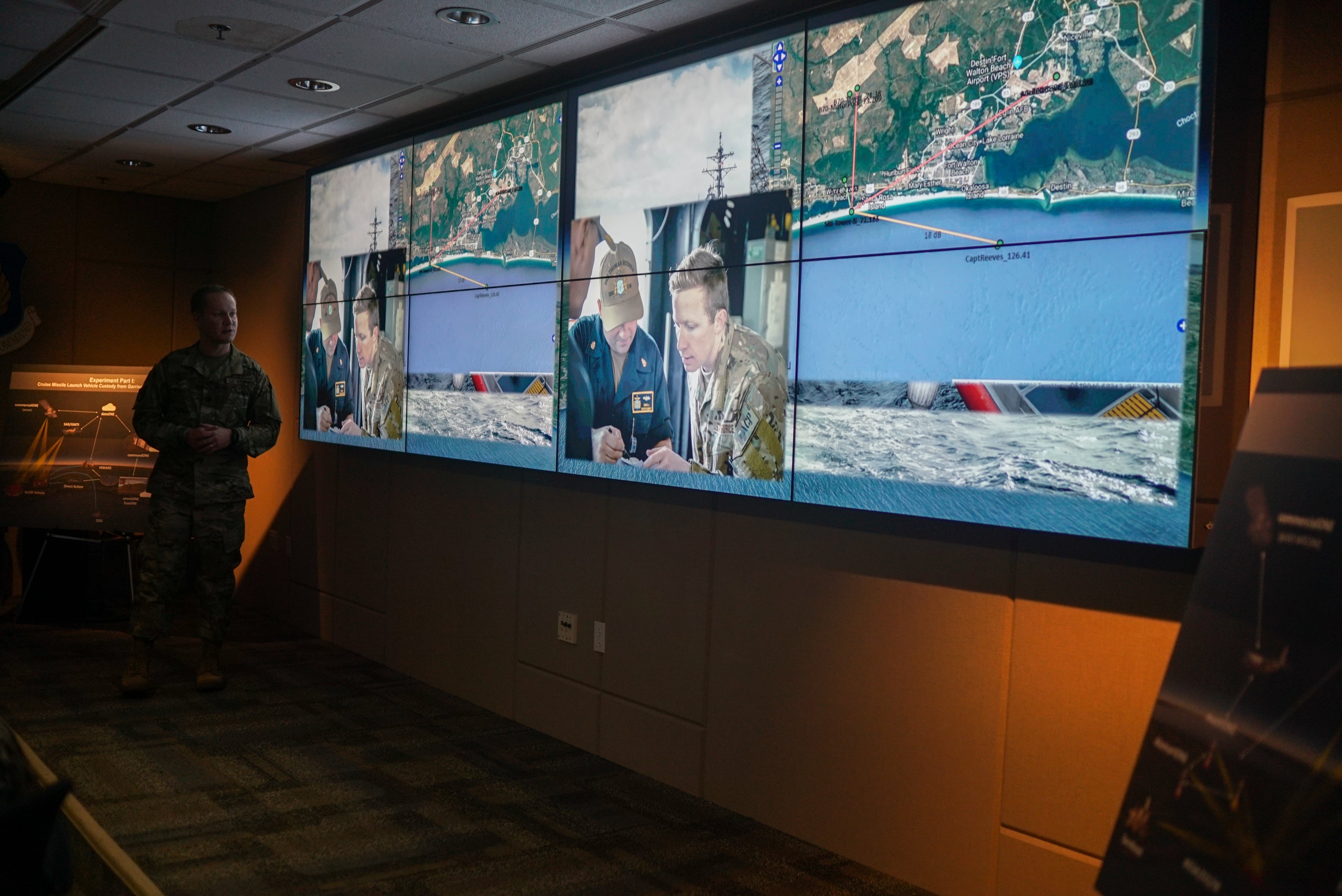WASHINGTON — The Pentagon team developing a new joint war-fighting concept is walking a delicate line to define when the military services need to follow common standards and when the branches need to develop their own solutions that are still interoperable.
Under the future war-fighting concept, Joint All-Domain Command and Control, the Pentagon wants to pass data through a complex web of battlefield platforms to connect the best sensor to the best shooter. With data at the core of the concept, the JADC2 Cross-Functional Team has held stakeholder meetings to define data governance and in January settled on a definition for a common data fabric, or set of standards and tools to share data across the department.
“We’re trying to find the right balance. There’s a lot of pushback on ... standards specifically,” Brig. Gen. Rob Parker, the J-6 deputy director for JADC2 with the Joint Chiefs of Staff, said Tuesday at an AFCEA Washington, D.C., event. “So we’re looking for a minimum required, when necessary, and really continue to focus on federated ... with the understanding that while we will have a mission partner federated data fabric out there, we acknowledge the services, combatant commands [and] other agencies are going to have their own fabrics that we need to be able to connect with and interoperate with.”
Essentially, the services argue that they need to maintain certain levels of decision-making authority since they have specific missions to fulfill. The services have their own joint war-fighting constructs: the Army has Project Convergence, the Air Force calls its effort the Advanced Battle Management System, and the Navy’s version is Project Overmatch. In the end, however, the systems must link to each other to pass data in battle and coordinate with allies, while still serving the missions each service handles.
So the Joint Chiefs leadership is trying to get away from anything goes — as top JADC2 official Lt. Gen. Dennis Crall put it recently — setting some standards without being overly prescriptive.
The current approach of each service tackling joint war-fighting somewhat differently isn’t a bad thing, Parker said.
“Right now we acknowledge that,” Parker said. “And right now, we think it’s good, for the most part. Services have some very specific problem sets they need to work on, but we also need to be able to see what’s in the realm of the possible. When you’re working just in one area, or trying to be overly restrictive or confining, we’re going to miss something that we need.”
However, Parker said, the efforts can’t stay separate forever.
“What you’ll increasingly see is the services will have the ability to continue to go after certain problem sets, but in terms of developing the technologies and capabilities, we need to meet some of the requirements that have been identified through the capability gap analysis ... the department, the Joint Staff — through the CFT [cross-functional team] — will need to start to bring that together,” Parker said.
Parker added that the Joint Chiefs of Staff is looking at new ways to incentivize the services to accelerate modernization and ensure that their systems are interoperable.
Meanwhile, he said that JADC2-CFT is still awaiting final approval of its JADC2 strategy from Deputy Secretary of Defense Kathleen Hicks before it heads to Defense Secretary Lloyd Austin’s desk. But he noted that Gen. Mark Milley, chairman of the Joint Chiefs, signed off on the document. Final approval is expected in the coming weeks, he said.
Andrew Eversden covers all things defense technology for C4ISRNET. He previously reported on federal IT and cybersecurity for Federal Times and Fifth Domain, and worked as a congressional reporting fellow for the Texas Tribune. He was also a Washington intern for the Durango Herald. Andrew is a graduate of American University.







